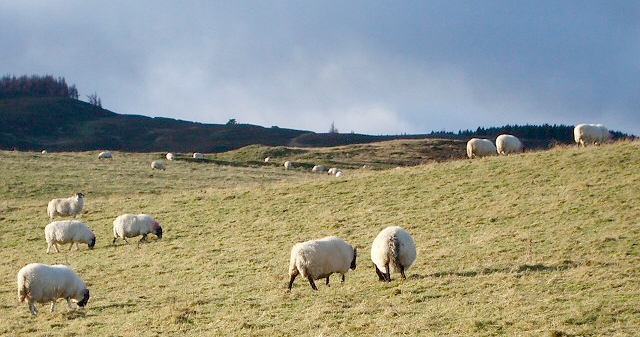
Reducing parasite contamination on pasture and remaining vigilant for nematodirosis will be high on sheep farmers’ agenda this April.
Beef and dairy farmers should concentrate on preventing parasitic disease in youngstock, according to the latest NADIS Parasite Forecast, sponsored by Merial Animal Health.
Sioned Timothy, veterinary adviser for Merial Animal Health says: "Anthelmintic treatment of ewes around lambing time can reduce pasture contamination and the subsequent challenge to lambs.
"Where possible, ewes and their lambs should be turned onto clean pasture; reseeding or ground not grazed by sheep last year.
"Where this is possible a short-acting anthelmintic can provide effective control.
"Ewes turned out onto contaminated pastures may benefit from a persistent anthelmintic treatment, whatever wormer is used, ensuring a small percentage of fitter ewes rearing single lambs remain untreated will help maintain a mixed parasite population; slowing the emergence of resistance.
"Remember that rams are considered to be even more susceptible than ewes to parasitic gastroenteritis (PGE), and should, therefore, be included in any treatment plan.”
The milder-than-normal temperatures experienced between last December and February across much of the UK could lead to a severe outbreak of nematodirosis in six to eight week old lambs, the like of which hasn’t been seen since 2013.
Sioned says: "The best method for preventing nematodirosis is to graze lambs on safe pasture, which was not used for lambs the previous year.
"Where this is not possible farmers should pay close attention to the nematodirus forecast for their area; lambs born in January and February may need to be given a preventative (prophylactic) worm drench with a Group 1 (white) wormer before the end of month.
"If April temperatures are low, this could delay hatching, in which case lambs may require treatment during May."
While isolated incidents of resistance have been reported, benzimidazole (BZ; Group 1) wormers are still recommended for nematodirosis treatment, especially early in the season before other worms pose a risk.
Where there is a known fluke population, sheep will already have been dosed in the autumn and early winter.
These animals should be dosed again in either March or April to prevent cases of chronic fluke occurring.
Triclabendazole should not be used in the spring; there are a number of other alternative flukicides that treat chronic fluke, including nitroxynil and closantel.
The best way to control parasite burdens in cattle and the production-limiting effect of parasitic gastroenteritis (PGE) is with annual rotational grazing i.e. cattle, sheep and crops to minimise the parasite challenge facing livestock at turnout.
However, this is not possible on most farms. "Autumn-born dairy calves and suckled beef calves require treatment in their first season at grass unless they are turned-out onto safe grazing," Sioned advises.
"Where lungworm is a particular problem, it is not too late to act and farmers should discuss their strategy with their vet," says Sioned.
"There are several anthelmintic control strategies which can be used, including strategic and timed wormer treatments."
Control strategies using wormer products will also aid the control of gut parasites such as ostertagia.
These control strategies rely on cattle being set stocked, and not moved onto contaminated pasture later in the grazing season.
A targeted approach, using weight assessment as an indicator of a possible parasite burden in youngstock is another option for determining the need to treat for gut parasites.
Farmers should speak to their vet or animal health advisor to ensure they are taking the most appropriate approach for their farm.
